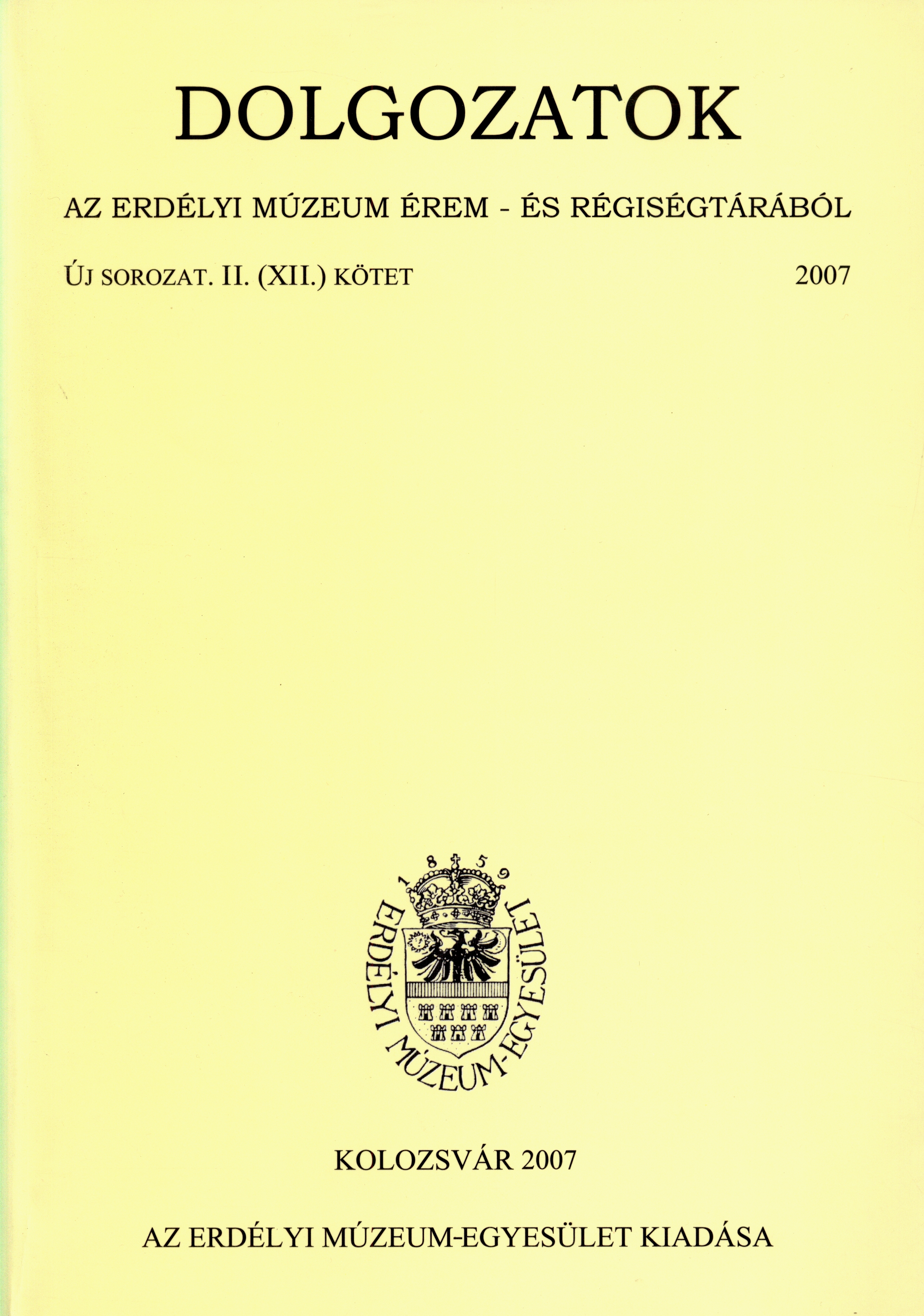Honfoglalás kori temetőrészletek a kolozsvári Kalevala utcából
The Cemeteries from the Age of the Hungarian Conquest on the Kolozsvár-Kalevala Street
Author(s): Balázs Gergely, Erwin GállSubject(s): Archaeology, Cultural history, Social history, 6th to 12th Centuries
Published by: Erdélyi Múzeum-Egyesület
Keywords: Hungarian conquest; cemetery; Kalevala Street
Summary/Abstract: I. About the circumstances of the research: In spring 2004 some more new finds from 10-11th centuries were found in the stocks/collection of the Historical Museum in Kolozsvár. According to the inventory book from 10th of October, 1944 the finds referring to the 10th century were brought to the Museum from the Kalevala Street. In April, 1949, Gyula László led an excavation in the neighbourhood, but only a few data have remained about it. The 5th grave stocks weren't included in the inventory.II. The topographical description of necropolis part in the Kalevela Street The site is situated in on the Northern edge of the Szamos terrace, called Kövespad. The small valley is easy to notice on the Military map dividing the edge into two. The Kövespad Street leads through this valley. On the upper edge of the terrace, the Kalevala street forks to East. The graves in the Zápolya and Kalevela Street were positioned on both sides of the valley (formerly presumably a road), situation which can be well seen from map nr. 1.III. Conclusions: The finds from the age of the Hungarian Conquest found in Kolozsvár unambiguously show that in 10th century on the territory of present-day Kolozsvár a settled down a not specially rich "armed to the teeth" military rank. The status symbol of the community was the sable. Comparing the number of the graves with the number of the sables the results are unique in the Carpathian Basin. In about 40 graves excavated till now in ten were found sables, (Kalevala Street - 2 sables, Plugarilor Street - 3 sables, Zápolya Street - 5 sables) which mean 25%. As for comparison, there are the cemeteries in Upper-Tisza region: in 3 cemeteries in Karos from 167 graves only 11 sables are known (6,58%), in 50 graves of 2 cemeteries in Kenézlő only 5 sables were found (10%), in Tiszabezdéd in 17 graves 3 sables (17,64 %) and in 13 graves in Tiszaeszlár II. 3 sables are known. (23,07%). From other cemeteries one or two sables are known in average. This high occurrence of the above mentioned weapon can only be explained with the presence of a regular military social strata. Besides, the cemeteries - as we have shown in the topographical description - are situated on strategically important places. One may suppose that the presence of the military group was connected with the control of the commercial (salt) roads leading through and under the terrace. These kind of military centres are well known from that age and later. For example, military centres were created in the vicinity of commercial roads on territories controlled by the Vikings (e. g. Birka) or in Muntenia, Romanian cnezates. On the basis of dating possibilities it cannot be excluded that the Kövespad cemeteries from the age of the Hungarian Conquest were in use till the end of 10th century - begin of 11th century when the Kolozsmonostor fortress was built.
Journal: Dolgozatok az Erdélyi Múzeum Érem- és Régiségtárából. Új sorozat
- Issue Year: 2007
- Issue No: II
- Page Range: 105-115
- Page Count: 11
- Language: Hungarian

